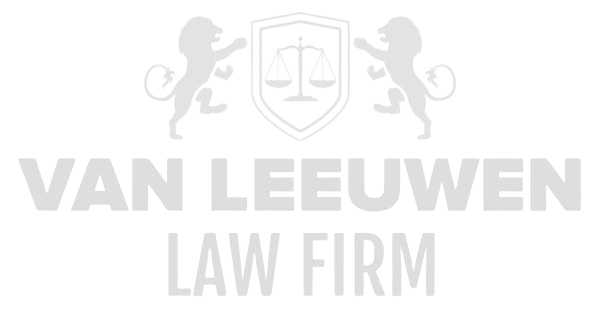In today’s business landscape, it is inevitable that companies face an increasing number of complex disputes that not only affect the legal foundations of an organization but also have profound consequences for continuity and reputation. Especially disputes involving allegations of financial mismanagement, fraud, bribery, money laundering, corruption, and violations of international sanctions require an exceptional degree of care and expertise. This category of disputes is distinguished by its severity and multidimensional impact: not merely a legal conflict, but an existential threat that challenges the foundations of trust, ethics, and business operations. In such cases, the organization faces not only prolonged and intensive legal proceedings but also in-depth investigations by regulators, media scrutiny, and potentially irreparable damage to its brand image.
The complexity of these disputes is further compounded by the often international dimension, where multiple jurisdictions and a web of rules, sanctions, and legal frameworks converge. The impact extends beyond the dispute itself; its aftermath can haunt organizations for years, resulting in reputational damage that leads to loss of customer trust, diminished market position, and severe financial consequences. Preventing and resolving such conflicts therefore requires an integrated and highly specialized approach, in which legal expertise is inseparably linked with strategic business management, risk management, and reputation management. This demands not only sharp legal analysis but also a proactive and pragmatic strategy capable of quickly and effectively responding to imminent escalations.
Early Risk Identification & Monitoring
Early recognition of potential risks forms the first and perhaps most crucial line of defense in preventing complex disputes. In organizations where financial misconduct, corruption, or sanctions violations occur, a systematic and structured approach to risk identification can make the difference between manageable situations and escalations that lead to extensive legal procedures and reputational harm. Identifying risk factors goes far beyond simply detecting suspicious transactions or irregularities; it requires an in-depth analysis of processes, behavioral patterns, and business structures that reveal vulnerabilities. Only through continuous monitoring of such signals can an organization intervene in time before an incident escalates into a crisis.
Data-driven methodologies play an increasingly important role in this risk detection. By combining advanced data analytics with internal reporting systems and whistleblower platforms, a proactive framework is created that not only detects suspicious activities but also uncovers subtle patterns and correlations that would otherwise go unnoticed. Internal audits form an essential link here, checking whether internal guidelines, laws, regulations, and ethical codes are actually being followed. These audits should not merely serve as control tools but primarily as early warning systems that provide starting points for follow-up investigations and preventive measures.
The effectiveness of early risk identification depends heavily on integration within the entire business operation. This means that compliance, legal departments, internal audit teams, and management must engage in an ongoing dialogue, where information is shared quickly and accurately. Only through such multidisciplinary collaboration can a holistic risk picture emerge that enables organizations to remain alert and avert potential crises early. This forms the cornerstone of sustainable risk management that respects the complexity and sensitivity of disputes surrounding financial mismanagement, fraud, and sanctions violations.
Internal Dispute Resolution & Mediation
When conflicts arise within the organization, it is vital that they are addressed quickly, efficiently, and with respect for confidentiality. Internal dispute resolution and mediation offer a crucial opportunity to prevent escalation to external procedures, thus avoiding unnecessary legal risks and publicity. This requires organizations to have robust internal mechanisms in place where conflict resolution is central without disrupting business processes. Through mediation, involved parties can be guided toward constructive solutions that respect underlying interests without culminating in protracted legal battles.
The effectiveness of internal dispute resolution is largely determined by the expertise of those leading these processes. Managers and supervisors should therefore be trained in mediation techniques and conflict management. This training enables them to recognize early signs of disagreement and respond appropriately by facilitating dialogue and negotiation. By addressing conflicts in a low-threshold and informal manner, the organization becomes more resilient against escalations that could undermine trust within teams and compromise business integrity.
Furthermore, internal dispute resolution requires a culture that cherishes openness and transparency. Only in an environment where employees feel safe to report misconduct can mediation effectively contribute to reducing integrity issues. This culture not only promotes conflict resolution but also strengthens preventive impact by enabling earlier detection and handling of potential escalations. The success of internal dispute resolution is therefore closely linked to an organization’s ability to create an ethically responsible and communicatively strong environment.
Legal Preparedness and Strategy Development
Developing solid legal preparedness forms the backbone of effective dispute resolution in complex conflicts arising from financial misconduct, corruption, or sanctions violations. Organizations must equip themselves with multidisciplinary teams where legal expertise closely collaborates with financial specialists, compliance officers, and external advisors. These teams are responsible for developing scenarios and response protocols that anticipate various types of escalations, from internal investigations to criminal proceedings and administrative sanctions. By clearly defining roles, responsibilities, and actions in advance, costly delays during a crisis can be prevented.
Strategy development goes hand in hand with thorough preparations. This includes not only gathering all relevant facts and drafting legal analyses but also mapping out potential risks and impacts on business operations. Attention is paid not only to legal implications but also to the broader organizational impact: reputation, financial health, and stakeholder relationships. This integrated approach results in a strategic framework that can be flexibly deployed and adapted to the dynamics of the conflict.
It is important that this preparedness is not static but a continuous process of evaluation and adjustment. New developments within the company, the market, and in laws and regulations must be integrated so that the strategic plan remains up-to-date. In times of escalation, this robust preparation provides guidance and direction, making it possible not only to operate reactively but also to proactively seize opportunities and mitigate damage.
Transparent Communication & Stakeholder Management
In an era where information spreads rapidly and public opinion directly affects organizational viability, transparency in communication is an absolute necessity when managing complex disputes. This is especially true when allegations of financial mismanagement, fraud, or sanctions violations arise. Effective communication management requires a proactive and consistent approach aimed at carefully informing all relevant internal and external stakeholders. These range from employees and shareholders to regulators, customers, and the general public.
Reputation management plays a crucial role here. In conflict situations where emotions run high and uncertainty can lead to speculation, a well-thought-out communication strategy acts as a shield against reputational damage. The goal is to present a credible and integrity-driven narrative, emphasizing openness and honesty without unnecessarily exposing vulnerable legal positions. This balance demands a sensitive and professional approach that protects the organization while maintaining or regaining trust.
Moreover, communication should not be seen as one-way traffic but as a dynamic process in which dialogue and feedback are valued. By actively listening to stakeholders’ concerns and questions, policies and responses to the dispute can be better tailored. This not only enables control over the message but also strengthens relationships with stakeholders, which is invaluable for the recovery and future resilience of the organization.
Cooperation with Regulators and Law Enforcement Agencies
Interaction with regulators and law enforcement agencies is an inevitable and highly sensitive part of dispute management in cases involving allegations of fraud, corruption, or sanctions violations. Developing and maintaining a constructive relationship with these bodies is crucial to protecting the organization’s interests as effectively as possible. An open and transparent dialogue creates room for trust and cooperation, which can contribute to a more balanced and efficient resolution of investigations and procedures.
It is essential to carefully align internal compliance and investigative activities with the demands and expectations of regulators. This not only avoids duplicated efforts but also enhances the organization’s credibility and reliability in the eyes of authorities. Through a professional and organized approach, legal risks are minimized, and the organization can maintain as much control as possible, despite the often complex and unpredictable nature of criminal and administrative procedures.
This cooperation requires a continuous balance between safeguarding legal rights and demonstrating a willingness to cooperate. Failure to adequately manage this relationship can lead to escalations, harsher sanctions, and reputational damage. Therefore, legal teams must possess not only substantive expertise but also diplomatic insight and strategic capability to successfully navigate these delicate interactions.
Forensic Investigations & Evidence Management
In disputes involving financial misconduct, fraud, corruption, or sanctions violations, the rapid and expert execution of forensic investigations is invaluable. These investigations form the foundation for understanding the scope, nature, and potential consequences of the dispute. Forensic investigation requires not only deep knowledge of financial and legal aspects but also thorough mastery of investigative and analytical techniques aimed at unraveling complex networks of transactions, documents, and behaviors. Only with a detailed and accurate understanding can the necessary actions be determined to protect the organization and mitigate potential liabilities.
Evidence management goes hand in hand with forensic investigation. Properly recording, securing, and documenting evidence is essential to maintain its integrity and strengthen its use in legal proceedings. This includes careful handling of digital data, contracts, and financial documents, as well as adhering to strict protocols regarding the chain of custody and access control. Poor evidence management can lead to the destruction of evidence or compromise its reliability, with potentially disastrous consequences for the defense or prosecution of the organization.
Moreover, forensic investigations play a role in identifying responsible parties within the organization. By objectively and impartially determining where, when, and how misconduct occurred, the investigation can contribute to targeted corrective measures. This not only helps limit further damage but also highlights structural issues and supports the development of effective remediation plans.
Financial and Operational Damage Mitigation
The immediate effects of allegations of fraud, corruption, or sanctions violations often manifest as acute financial and operational threats to the organization. Implementing effective damage mitigation measures is therefore critical. This may include freezing assets to prevent further loss or leakage, as well as reviewing and adjusting ongoing contracts to limit unforeseen liabilities or risks. The goal is to reduce the direct impact and ensure business continuity despite the turbulence caused by the dispute.
Operational continuity is another crucial focus at this stage. Ensuring uninterrupted business processes requires quickly identifying vulnerable points and implementing redundant systems or alternative procedures. In some cases, this may involve temporary restructuring to protect essential functions from disruptions arising from the dispute. These measures help stabilize and preserve both internal operations and external relationships.
It is also important to not only limit the financial impact but communicate it transparently to stakeholders. Clear reporting and accountability regarding the measures taken help maintain the confidence of shareholders, investors, and clients. A proactive approach in this area reduces uncertainty and strengthens the organization’s position during a turbulent period.
External Dispute Resolution & Arbitration
When internal solutions prove insufficient, the stage of external dispute resolution becomes relevant. Selecting experienced lawyers and arbitration experts is crucial at this stage. Complex disputes at the intersection of financial mismanagement, fraud, corruption, and sanctions require not only deep legal knowledge but also strategic insight into arbitration dynamics and alternative dispute resolution (ADR) mechanisms. The ability to select appropriate procedures and jurisdictions, aligned with the organization’s interests, can make the difference between a prolonged legal battle and an efficient, targeted resolution.
Arbitration offers advantages over traditional court proceedings, such as speed, discretion, and flexibility. These features are especially important when reputation and continuity are at stake. By strategically utilizing arbitration, conflicts can be managed and resolved in a controlled manner, allowing the organization to retain oversight of both the process and the outcome. This requires thorough preparation and comprehensive knowledge of international arbitration institutions and rules.
It is also crucial that external procedures focus not only on legal aspects but on preserving business relationships and reputation. Lawyers and arbitration experts must work closely with communications advisors and management to formulate an integrated strategy that serves both legal and reputational objectives. This approach strengthens the legal position while also restoring and maintaining trust with clients, partners, and other stakeholders.
Organizational Culture & Behavioral Change
Preventing recurring conflicts stemming from financial mismanagement, fraud, and related misconduct requires deep cultural and behavioral change within organizations. A culture of integrity and ethical conduct must be firmly embedded at all levels, from executive management to the operational workforce. This requires targeted initiatives that raise awareness, sharpen behavioral standards, and encourage employees to make responsible choices, even in difficult situations.
Leadership plays a key role in this process. The behavior of management and the integration of ethics into leadership and HR policies are critical to the success of cultural change. Transparent communication about values, consistent enforcement of rules, and rewarding ethical behavior are essential building blocks. Employees must also receive training and support to recognize dilemmas and act appropriately, ensuring integrity and preventing recidivism.
Beyond individual behavioral change, structural embedding of ethics is necessary. Governance and compliance programs should be adapted to place ethical considerations at the center, and processes designed to promote integrity. Creating an environment where misconduct is promptly identified and addressed results in an organization resilient to integrity risks that continuously learns and improves.
Lessons Learned & Recovery Plans
After a dispute or conflict involving financial mismanagement, fraud, or sanctions violations ends, it is vital that the organization not only analyzes the damage but also learns from the events. A thorough evaluation of the dispute provides valuable insights into deficiencies in existing governance and compliance tools and identifies opportunities for improvement. By systematically documenting and implementing these lessons learned, similar problems can be prevented in the future.
Developing recovery and reputation restoration programs is an essential part of this process. These programs should focus on rebuilding trust with internal and external stakeholders, strengthening organizational culture, and improving compliance. Beyond communication and transparency, this often involves adjustments to policies, processes, and training. The goal is to make the organization stronger, more resilient, and better prepared to prevent and manage future conflicts effectively.
Finally, the recovery process requires continuous monitoring and adjustment so the organization can adapt to changing circumstances and risks. This proactive approach distinguishes mere damage control from sustainable transformation. By implementing a learning and adaptive organizational culture, the foundation is laid for a future where integrity and compliance are fundamental pillars of operations.









